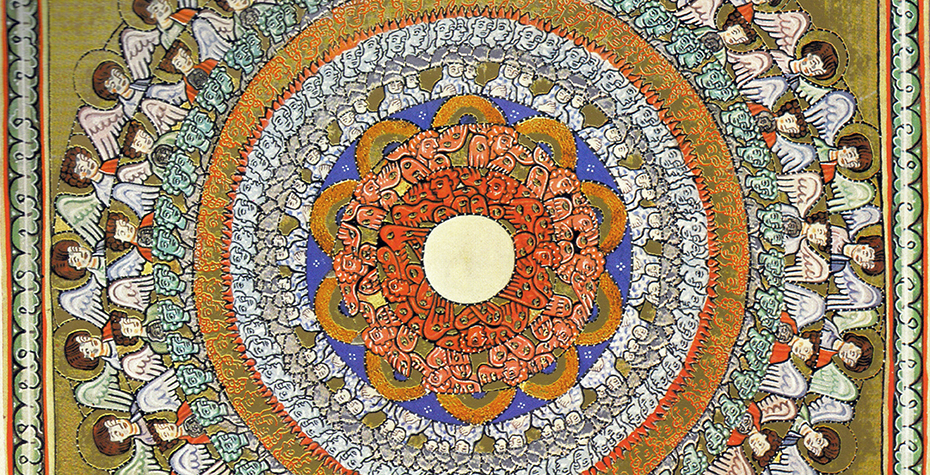Claire Fontijn publishes a new book about Hildegard von Bingen, a 12th Century mystic, visionary, philosopher, and composer

Claire Fontijn, associate professor of music, recently published a new book. The Vision of Music in Saint Hildegard’s Scivias: Synthesizing Image, Text, Notation and Theory (Music Word Media Group, 2013). Professor Fontijn specializes in early music with a particular interest in female composers. She co-teaches an interdisciplinary course with Professor Sharon Elkins (Religion) on Hildegard of Bingen, a revolutionary medieval mystic.
"When Sharon Elkins and I first started teaching our biennial course on Hildegard of Bingen in 1999,” said Professor Fontijn, “I wrote a brief essay for the students about Hildegard's Ordo Virtutum, a morality play that is sung throughout. Ordo Virtutum (The Order of the Virtues) represents the first morality play in western music history, treating the perennial theme of virtue versus vice."
“Thanks to the course, the idea came to me of writing about the early version of the Ordo Virtutum: Instead of 17 virtues, there are only three. Some have argued that this early version, The Vision of Music, is not stageworthy. But during its performance last fall, the Collegium Musicum under Tom Zajac proved just how dramatic The Vision of Music can be. My new publication offers a performing score of The Vision of Music, along with an in-depth essay about its genesis and its relationship to the later Ordo Virtutum."
Emma Rackstraw ‘14 took the Hildegard class in her first year. “As a first-year in the course, it was the perfect entry point for me into a true liberal arts education, with its mix of science, music, religion, history, etc.,” said Rackstraw, who also performed Ordo Virtutum with Collegium Musicum last fall. “I always say that Hildegard was a true Wellesley woman-- she dabbled in every possible discipline, and excelled in all of them!”
The print edition of Fontijn’s work is accompanied by a Vision of Music web app (available on Chrome browsers) that includes interactive graphics and images, texts and sample music. There are also links to iTunes where readers can purchase the full versions of St. Hildegard’s compositions. According to the publisher, “Hildegard received her visions with all of her senses; now this app allows us to examine The Vision of Music as she intended with all parts of her musical visions, or ‘symphonia,’ brought together in a unified experience.”
St. Hildegard of Bingen is one of the most fascinating figures of the 12th century. The Music Word Media Group website includes this brief biography of the extraordinary woman.
“The mystic, visionary, philosopher, and composer Hildegard of Bingen (1098–1179) was nobly born in Bermersheim at the time of the first crusade. She experienced vision, trances, and illness from an early age. Her first vision occurred before she was five. Three years later she was enclosed as an oblate at the Benedictine monastery of Disibodenberg, named for an Irish monk who came as a missionary to the region in the seventh century.
“Hildegard was elected Abbess at the age of 38 in 1136. She composed a cycle of over 70 songs in a “Symphony of the Harmony of Celestial Revelations.” In contrast to the narrow scope of most chants in her day, Hildegard’s music used extremes of the vocal range and employed more wide intervals. She described her visionary experiences over a ten-year period, providing the material for the descriptions and colors of the performers and the stage in Ordo Virtutum, a musical drama about the struggle for a human soul, or Anima, between the Virtues and the Devil.”
Fontijn’s previous publications include Desperate Measures: The Life and Music of Antonia Padoani Bembo and Fiori Musicali.
